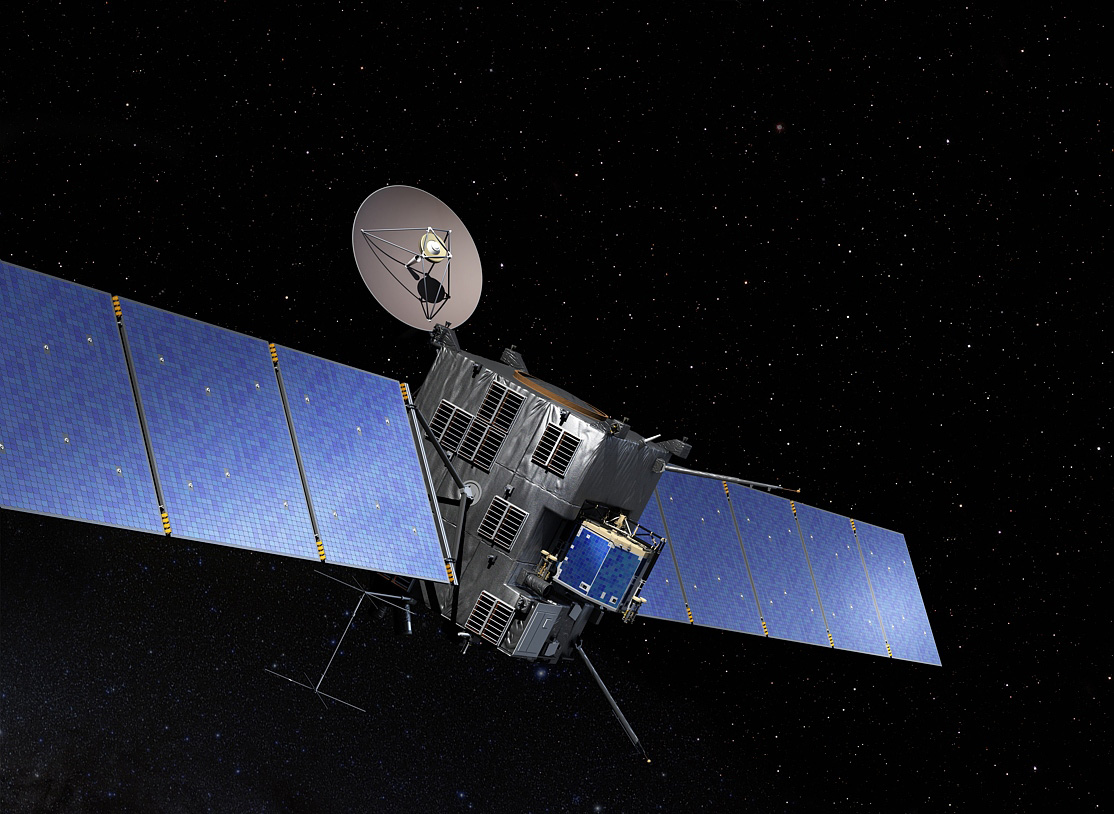By measuring the isotopic ratio between Deuterium and Hydrogen (usually denoted as D/H) of the water of the comet 67P/Churyumov-Gerasimenko (Altwegg et al., Science, 12/11/2014), the Rosetta mission has validated a crucial prediction of the model of the evolution of the Solar System usually named the “Nice model”.
The Nice model describes how the Solar System evolved since the time of formation of its giant planets and how it acquired its current structure. The characteristic feature of the model is that the orbit of the giant planets, initially more circular and closer to each other, dramatically changed during a phase of orbital instability around 4.1 Gy ago. As a consequence of this instability, the population of small bodies located beyond the original orbit of Neptune got violently dispersed. Most of these bodies have been ejected from the Solar System, but a minority of them would survive today in the Kuiper belt (just beyond the current orbit of Neptune) and in the Oort cloud (located at tens of thousands of Astronomical Units1 from the Sun (Brasser and Morbidelli, 2013).
The Kuiper belt and the Oort cloud are today the reservoirs of short period and long period comets, respectively. The Nice model predicts that these two populations of comets are statistically identical from the point of view of physical and chemical properties because their two current reservoirs formed from the same original population. Comets may be quite different from each other, but the same diversity should be present in both the short period and long period populations, in similar proportions.
Up to now, however, the observations seemed to show the contrary. The D/H ratio measured in three long period comets (Halley, Hale-Bopp and Hyakutake) was very high (about twice the terrestrial value), while the D/H ratio of the first short period comet (Hartley II) turned out to be terrestrial. These results seemed to suggest a systematic difference in D/H ratio for the two populations. The authors of the Nice model, confident in their reconstruction of the Solar System evolution, believed that the statistics made on a small number of objects were just misleading….. holding their breaths while awaiting for more data.
 The Rosetta mission result confirms their expectations. The D/H ratio of the comet 67P/Churyumov-Gerasimenko, measured by the instrument Rosina onboard of Rosetta, is similar (even larger) than that measured for the three long period comets mentioned above. To this, one should mention the recent observations from the ground of the long period comet 153P/Ikeya-Zhang, for which Deuterium has not been detected (implying a D/H ratio well smaller than that of the other, previously observed long-period comets). Altogether, these results demonstrate that there is no systematic difference between short period and long period comets, coming from the Kuiper belt and the Oort cloud, in agreement with the predictions of the Nice model. From all these measurements of the D/H ratio, the same diversity seems to be present in both populations.
The Rosetta mission result confirms their expectations. The D/H ratio of the comet 67P/Churyumov-Gerasimenko, measured by the instrument Rosina onboard of Rosetta, is similar (even larger) than that measured for the three long period comets mentioned above. To this, one should mention the recent observations from the ground of the long period comet 153P/Ikeya-Zhang, for which Deuterium has not been detected (implying a D/H ratio well smaller than that of the other, previously observed long-period comets). Altogether, these results demonstrate that there is no systematic difference between short period and long period comets, coming from the Kuiper belt and the Oort cloud, in agreement with the predictions of the Nice model. From all these measurements of the D/H ratio, the same diversity seems to be present in both populations.
Observations of a larger number of comets remain nevertheless necessary to determine whether the proportions between the low-D/H comets and the high-D/H comets are indeed the same among short period and long period comets.
Reference : Brasser, R., Morbidelli, A. 2013. Oort cloud and Scattered Disc formation during a late dynamical instability in the Solar System. Icarus 225, 40-49.
Photo : © CNES/Rosetta/MPS for OSIRIS TESA/Rosetta/MPS for OSIRIS Team MPS/UPD/LAM, 2014






